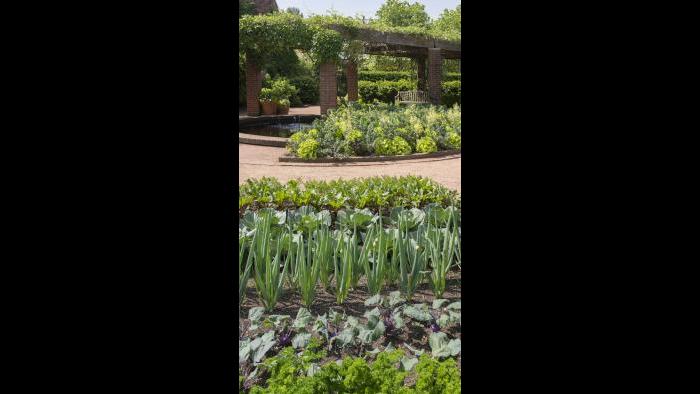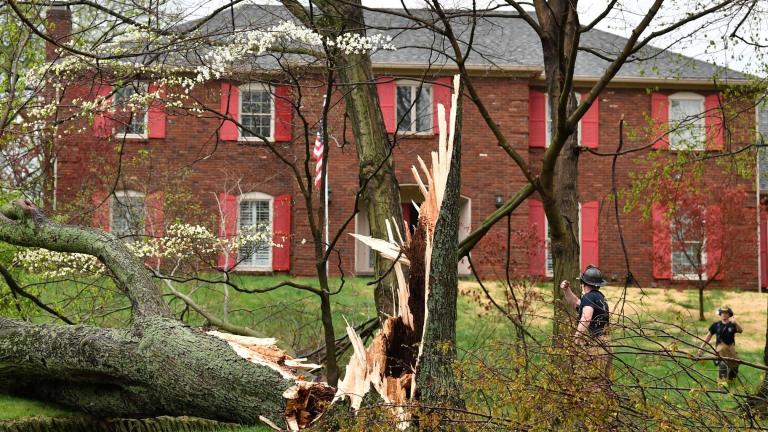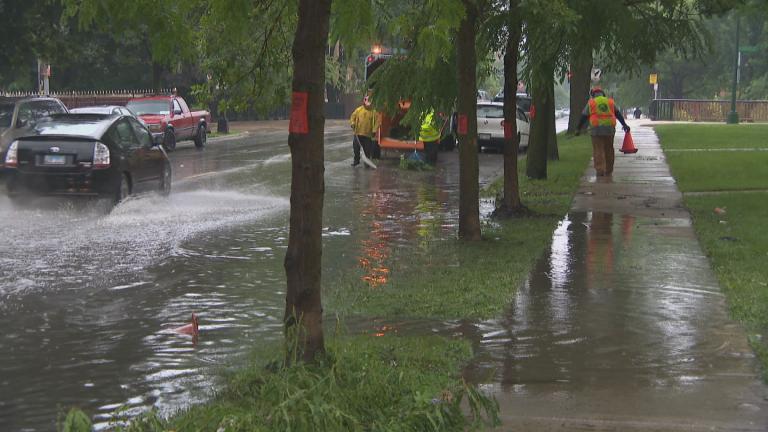Eliza Fournier of the Chicago Botanic Garden joins us to share some gardening tips for warm winter weather.
Weather: Protecting plants
• Don’t worry too much about plants that are already peeking out – they are hardy enough to not get damaged. Even if the foliage is harmed, the flowers should be fine.
• One-gallon perennials planted last year sometimes heave out of the ground, making them susceptible to cold. Be sure to place mulch or leaves around the bases of these plants to help insulate the soil.
• The biggest concern right now is fruiting trees like apple and cherry trees. Once they start to bud, they are vulnerable to the cold. If we get a hard frost once they are budded, it could ruin the crop for the year.
![]()
Above: Beauty shots from last spring at the CBG.
Getting ready for spring
• Now is a great time to prune shrubs and trees. Start with any trees and shrubs that got damaged over winter. Any small twigs nibbled by rabbits or other critters should be taken back to the main branch or trunk.
• Never prune anything that flowers on old wood. Those buds are already set. If you prune them off, you will lose your flowers for the spring.
• “Old wood” includes viburnums, forsythia, lilacs and rhododendrons.
• Use the right tool for the job when pruning. Use a hand pruner for anything smaller than your thumb in width. Use a lopper for anything small wrist size or skinnier. And use a handsaw for anything larger than your wrist.
![]()
Seed starting
• It’s not too early to get started indoors with warm season crops, including tomatoes, peppers and eggplant.
• Make sure you use seed starting mix and not topsoil.
• Set it in a sunny window or under grow lights.
• Dome your plants to conserve moisture. Seeds dry out very quickly!
• Cool season crops can be planted outside in a few weeks directly into the ground by seed.
• Cool season crops include: spinach, leaf lettuce, beets, radishes, kale, Swiss chard and peas.
![]()
Orchid do’s and don’ts
• The biggest mistake with orchids is overwatering. Orchids need to dry out between watering. Use your finger to see if soil is really dry before giving more water.
• Orchids need light to bloom—not too much and not too little.
• Typically east or south-facing windows are best. (West is too much light, north too little.)
• Orchids benefit from a regular dose of 20-20-20 fertilizer. Use a very diluted solution (1/4 strength) after weekly waterings.
Related stories:
 Tom Skilling Explains Spring-Like February Weather
Tom Skilling Explains Spring-Like February Weather
Feb. 20: Another record high temperature in Chicago. How long will spring in February last?
 Bill Would Allow Illinois Farmers to Grow Industrial Hemp
Bill Would Allow Illinois Farmers to Grow Industrial Hemp
Feb. 24: At least 16 states have legalized industrial hemp production for commercial purposes. Could Illinois be next?
 Chicago Agricultural High School Teaches More Than Farming
Chicago Agricultural High School Teaches More Than Farming
Nov. 17: You’re probably aware that Chicago has high schools specializing in math and science as well as the arts, but did you know that Chicago’s big urban school system has an agricultural high school?













